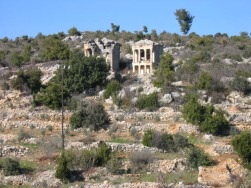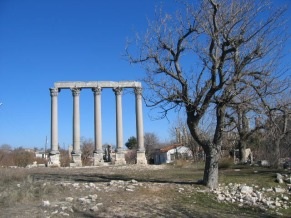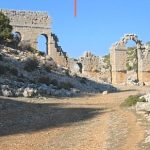“Quite Tall Tower” Population: 850
Old name: Diocaesarea
Uzuncaburç is a delightful, peaceful hill village taking its name from the remains of the ‘quite tall tower’ (uzunca burç) which stands near the centre. Probably built in the 3rd century BC as a watchtower to ensure that no one could creep up and steal the treasures of the nearby temple, it was restored 600 years later which probably accounts for its current good condition. It stands on the site of ancient Diocaesarea which seems to have stood in much the same sort of relationship to nearby Olba (Ura) as Didyma did to Miletus. In other words it appears to have been a centre of religious worship rather than a town with the worshippers living at Olba and coming here to pray.
Around the site
Signs behind the tower point to a Roman road (Roma Yolu). Follow them and eventually you will come to the romantic remains of a flagstoned road wending its way into the countryside with rock-cut tombs dotted around it.
Uzuncaburç’s other sights are clustered together as you enter the village. Just to the left is a superbly-sited 2nd-century theatre which once seated 2,500 spectators.
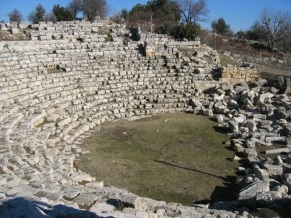 You approach the main part of the archaeological site (admission €3, 2024) via the remains of what must once have been the very elegant – and much larger – 1st-century Tören Kapısı (Parade Gate). It faces a ruinous 2nd or 3rd-century fountain-house (nymphaeum).
You approach the main part of the archaeological site (admission €3, 2024) via the remains of what must once have been the very elegant – and much larger – 1st-century Tören Kapısı (Parade Gate). It faces a ruinous 2nd or 3rd-century fountain-house (nymphaeum).
Nearby stand the substantial remains of a Temple to Zeus Olbios, originally constructed in 295 BC by Seleucus I Nikator. It was the first peripteral temple in Asia Minor (i.e. tample surrounded by columns) and the first to incorporate Corinthian capitals into its architecture. Th temple was turned into a basilican church in Byzantine times.
A smaller Temple to Tyche, the goddess of fortune, designed without a roof in the 1st century, stands near the solid remains of the northern city gate, itself probably built in the 2nd century and restored in the late 4th century.
Unfortunately, little care has been taken to protect the site’s rural setting. Despite some lovely abandoned buildings near the entrance, an ugly new ticket office has been inflicted on it. Worse still is the eyesore of a toilet block dumped right in its centre. However, plans for more work at the site were announced in 2021 so this may soon change.
It’s worth wandering around he modern village of Uzuncaburç where you might spot elderly women reusing the wool from old cardigans to weave striped carpets (çul) or men herding large flocks of goats. Tucked away behind it are the picturesque remains of an ancient necropolis full of rock-cut tombs.
Sleeping
There is nowhere to stay in Uzuncaburc but Silifke has a few reasonable hotels.
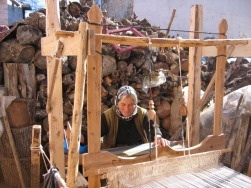
Transport info
Infrequent timetabled buses from Silifke make the run to Uzuncaburç (30km). Be sure to check the time of the last one back.
If you can, it’s better to drive up so that you can stop en route and admire the staggering, temple-like tombs of ancient Imbriogon near the village of Demirci on the way. Scattered about on the hillside are other remains of what appears to have been a city during the 2nd and 3rd centuries.
With your own transport you will also be able to explore the ruins of Ura and the remains of the huge Byzantine church at Cambazlı.
